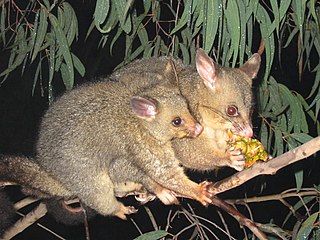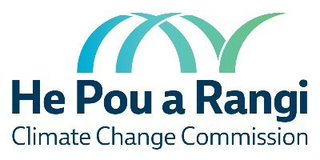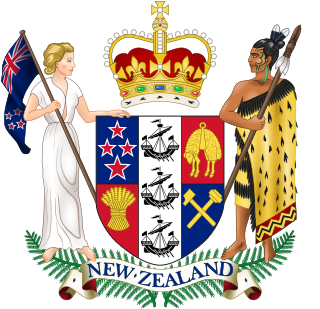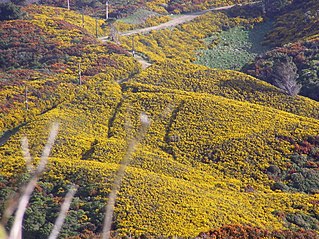 W
WIn New Zealand, agriculture is the largest sector of the tradable economy. The country exported NZ$46.4 billion worth of agricultural products in the 12 months to June 2019, 79.6% of the country's total exported goods. The agriculture, forestry and fisheries sector directly contributed $12.653 billion of the national GDP in the 12 months to September 2020, and employed 143,000 people, 5.9% of New Zealand's workforce, as of the 2018 census.
 W
W1080, the brand name given to the synthetic form of sodium fluoroacetate, is used in New Zealand in efforts to control populations of possums, rats, stoat and rabbits, which are invasive species in the New Zealand environment. Although the Parliamentary Commissioner for the Environment deemed the use of 1080 in New Zealand "effective and safe" in a 2011 re-evaluation and the substance is widely considered to be the most effective tool currently available for controlling possums over large areas, it remains a contentious issue, with the majority of the debate occurring between conservationists and livestock farmers on one side and hunters and animal-rights activists on the other.
 W
WAerial topdressing is the aerial application of fertilisers over farmland using agricultural aircraft. It was developed in New Zealand in the 1940s and rapidly adopted elsewhere in the 1950s.
 W
WAquaculture started to take off in New Zealand in the 1980s. It is dominated by mussels, oysters and salmon. In 2007, aquaculture generated about NZ$360 million in sales on an area of 7,700 hectares. $240 million was earned in exports.
 W
WThe Cairns Group is an interest group of 19 agricultural exporting countries, composed of Argentina, Australia, Brazil, Canada, Chile, Colombia, Costa Rica, Guatemala, Indonesia, Malaysia, New Zealand, Pakistan, Paraguay, Peru, the Philippines, South Africa, Thailand, Uruguay, and Vietnam.
 W
WThe Climate Change Commission is an independent Crown entity that advises the New Zealand Government on climate change action within the framework of the Climate Change Response Amendment Act. The Commission was established as the successor to the Interim Climate Change Committee following the passage of the Zero Carbon Act in November 2019.
 W
WThe common brushtail possum is a major agricultural and conservation pest in New Zealand.
 W
WThe Crown Pastoral Land Act is an Act of Parliament in New Zealand.
 W
WThe Dunedin listen (help·info) (1876–90) was the first ship to successfully transport a full cargo of refrigerated meat from New Zealand to England. In this capacity, it provided the impetus to develop the capacity of New Zealand as a major provider of agricultural exports, notwithstanding its remoteness from most markets. Dunedin disappeared at sea in 1890, and neither the ship nor her crew has ever been seen or heard from since.
 W
WThe foot plough is a type of plough used like a spade with the foot in order to cultivate the ground.
 W
WGorse was introduced to New Zealand in the early stages of European settlement. It is now a major invasive plant species with millions of dollars spent on its control.
 W
WHigh country is a New Zealand term for the elevated pastoral land of the South Island and - to a lesser extent - North Island. This terrain, which can be compared loosely with the outback of Australia, high veldt of South Africa and pampas of Argentina, lies in the rain shadow of the country's mountain ranges and tends to be extensively farmed land with a continental climate consisting of low rainfall, cold winters and hot summers. Livestock farmed in these regions include sheep and - increasingly - deer and alpaca, and a major ground-covering plant of the area is tussock.
 W
WKiwifruit or kiwi is a major horticultural export earner for New Zealand. New Zealand developed the first commercially viable kiwifruit and developed export markets, creating the demand for the fruit that exists today. Today New Zealand is the third largest kiwifruit producing country, next to China and Italy, and holds approximately 30% of the market share. In the 2008–2009 season the value of New Zealand kiwifruit exports was NZ$1.45 billion.
 W
WMāori potatoes or taewa are varieties of potato cultivated by Māori people, especially those grown before New Zealand was colonised by the British.
 W
WThe Minister of Agriculture is a ministerial portfolio in the government of New Zealand. It existed from 1889 until 2012, when the Ministry was merged into the larger Ministry of Primary Industries, and again from 2017 onwards as part of the Labour coalition government.
 W
WThe Minister of Forestry is a ministerial portfolio in the government of New Zealand. The position was created in 1893 as Commissioner of Forests, being renamed Commissioner of State Forests in 1922 before finally having the title altered from Commissioner to Minister in 1949.
 W
WSheep shearing is the process by which the woollen fleece of a sheep is cut off. The person who removes the sheep's wool is called a shearer. Typically each adult sheep is shorn once each year. The annual shearing most often occurs in a shearing shed, a facility especially designed to process often hundreds and sometimes more than 3,000 sheep per day.
 W
WStock and station agencies are businesses which provide a support service to the agricultural community. Their staff who deal with clients are known as stock and station agents. They advise and represent farmers and graziers in business transactions that involve livestock, wool, fertiliser, rural property and equipment and merchandise on behalf of their clients. The number and importance of these businesses fell in the late 20th century.
 W
WSweet potato cultivation in Polynesia as a crop began around 1000 AD in central Polynesia. The plant became a common food across the region, especially in Hawaii, Easter Island and New Zealand, where it became a staple food. By the 1600s in central Polynesia, traditional cultivars were being replaced with hardier and larger varieties from the Americas. Many traditional cultivars are still grown across Polynesia, but they are rare and are not widely commercially grown.